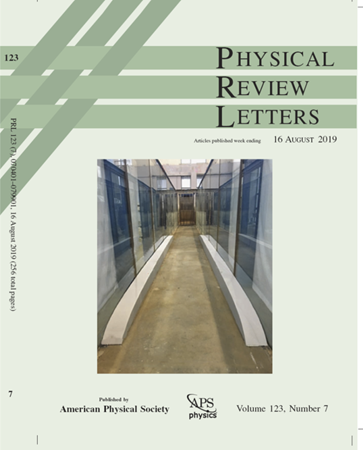可调谐相干激光干涉测量:演示40 dB杂散光抑制和与谐振光学腔的兼容性
IF 9
1区 物理与天体物理
Q1 PHYSICS, MULTIDISCIPLINARY
引用次数: 0
摘要
使用连续波激光器的激光干涉仪的一个主要限制是寄生光场,如幽灵光束,散射或杂散光,可以引起非线性噪声。这对于激光干涉地面引力波探测器尤其重要。提高它们的灵敏度,特别是在频率低于10赫兹时,受到寄生光子影响的威胁。这些可以将低频干扰上转换为相关测量频带内的相位和幅度噪声。通过使用伪随机噪声(PRN)相位调制人为调节激光器的相干性,可以抑制寄生场的这种影响。由于它依赖于这些场在不同的路径上传播,因此它不会为有意干涉而牺牲相干性。我们通过实验证明了该技术的可行性,在人工相干长度小于30 cm的迈克尔逊干涉仪中实现了40 dB的噪声抑制水平。我们探讨了这种抑制是如何依赖于延迟不匹配和PRN序列的长度的。我们还通过测量有和没有这种调制的线性腔的行为,证明了光学谐振器可以在有PRN调制的情况下工作。通过匹配谐振器的往返长度和PRN序列重复长度,恢复了经典响应。2025年由美国物理学会出版本文章由计算机程序翻译,如有差异,请以英文原文为准。
Tunable Coherence Laser Interferometry: Demonstrating 40 dB of Stray Light Suppression and Compatibility with Resonant Optical Cavities
A major limitation of laser interferometers using continuous wave lasers are parasitic light fields, such as ghost beams, scattered or stray light, that can cause nonlinear noise. This is especially relevant for laser interferometric ground-based gravitational wave detectors. Increasing their sensitivity, particularly at frequencies below 10 Hz, is threatened by the influence of parasitic photons. These can up-convert low-frequency disturbances into phase and amplitude noise inside the relevant measurement band. By artificially tuning the coherence of the lasers, using pseudo-random-noise (PRN) phase modulations, this influence of parasitic fields can be suppressed. As it relies on these fields traveling different paths, it does not sacrifice the coherence for the intentional interference. We demonstrate the feasibility of this technique experimentally, achieving noise suppression levels of 40 dB in a Michelson interferometer with an artificial coherence length below 30 cm. We probe how the suppression depends on the delay mismatch and length of the PRN sequence. We also prove that optical resonators can be operated in the presence of PRN modulation by measuring the behavior of a linear cavity with and without such a modulation. By matching the resonators round-trip length and the PRN sequence repetition length, the classic response is recovered. Published by the American Physical Society 2025
求助全文
通过发布文献求助,成功后即可免费获取论文全文。
去求助
来源期刊

Physical review letters
物理-物理:综合
CiteScore
16.50
自引率
7.00%
发文量
2673
审稿时长
2.2 months
期刊介绍:
Physical review letters(PRL)covers the full range of applied, fundamental, and interdisciplinary physics research topics:
General physics, including statistical and quantum mechanics and quantum information
Gravitation, astrophysics, and cosmology
Elementary particles and fields
Nuclear physics
Atomic, molecular, and optical physics
Nonlinear dynamics, fluid dynamics, and classical optics
Plasma and beam physics
Condensed matter and materials physics
Polymers, soft matter, biological, climate and interdisciplinary physics, including networks
 求助内容:
求助内容: 应助结果提醒方式:
应助结果提醒方式:


